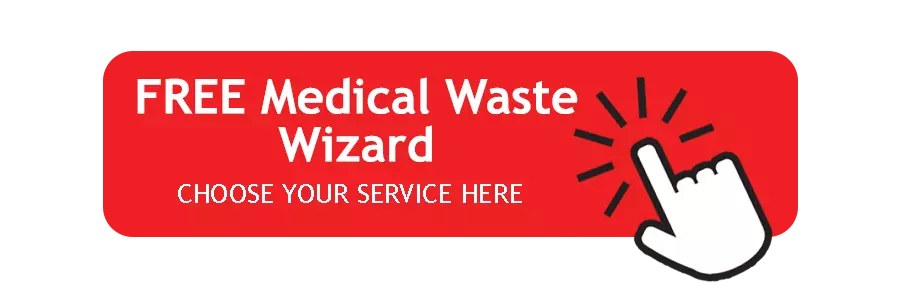Tips for Healthcare Facilities to Reduce Expenses

Running a healthcare facility, whether it’s in a hospital, clinic, or nursing home, can pose significant financial challenges. Think about all the costs that add up — employee wages, medical supplies, utilities, insurance — it’s a lot to handle.
The good news is that healthcare facilities can cut costs without sacrificing patient experience. By being proactive with expense management, you can stay profitable and still care for your employees and patients.
Here, we’ll look at a few tips healthcare facilities can use to save money and work more efficiently while continuing to provide quality care.
Common Healthcare Facility Expenses
Healthcare facilities face a variety of expenses to ensure efficiency and a high standard of care for patients. Let’s explore some of the main costs these facilities deal with and helpful tips on how to keep these expenses in check.
Payroll
Payroll is usually the biggest cost for healthcare facilities. This is due to the need for a large staff to ensure proper patient care. To cut staffing costs, facilities can train employees to do multiple jobs and invest in technology to make administrative tasks easier. For instance, automating billing or scheduling can lessen the time needed by staff to manage them manually.
Medical Supplies
Medical supplies, especially single-use items and specialized equipment, can be costly. Facilities can cut costs by negotiating bulk deals. You can also explore cheaper alternatives that meet quality standards. Reviewing inventory regularly and sticking with reliable suppliers can also help minimize waste and prevent over-ordering.
Energy Usage
Energy consumption is another major expense for healthcare facilities. Facilities can cut energy bills by using energy-efficient appliances and smart lighting. Adding insulation or installing solar panels can make a big difference, too. Taking a few easy steps can lead to big savings in the long run as well — think unplugging and storing equipment when it’s not in use.
Waste Disposal
Effective and safe waste disposal is key in healthcare. Facilities can easily reduce costs here by partnering with a reliable provider through Medical Waste Pros for a custom waste plan. This helps ensure proper handling of all the waste your facility produces. It can also help you avoid paying for services you don’t need.
Develop a Custom-Tailored Medical Waste Management Plan
Managing medical waste is an important task for healthcare facilities. If not handled correctly, it can lead to unnecessary costs and safety hazards. Everything from sharps and biohazards to prescription drugs and chemo materials require special care.
Rather than trying to do this in-house, consider leveraging an expert local provider to create a medical waste management plan tailored to your facility. This approach helps ensure regulatory compliance and works to protect all involved. Proper waste handling becomes second nature when facilities embrace customized management strategies. This approach can also help save money in the long run.
How a Custom Waste Management Plan Lowers Costs
Healthcare facilities often throw too much money at waste management with plans that don’t quite fit their needs. A custom plan can be a much better way to go. It lets you define how much waste your facility produces and only pay for what you need.
Consider a hospital that generates a lot of chemotherapy waste, for instance. It might require more frequent pickups. On the other hand, a smaller clinic may need less frequent services, but want specialized handling for pharmaceutical waste they produce.
Choosing a provider that handles different types of waste — sharps, biohazardous materials, and chemotherapy waste — can really help healthcare facilities simplify things. This way, you can avoid the headache of dealing with multiple service providers and save time and money in the process. Plus, it lowers the risk of compliance issues and the potential for fines or legal troubles that can come from improper waste disposal.
Invest in Training and Education
Investing in employee training and education is a great way for healthcare facilities to save money in the long run. Continuous education programs keep staff up-to-date with the latest practices, technology, and compliance rules. Well-trained employees often make fewer mistakes, work more efficiently and care for patients more. This can help save money and improve outcomes.
How Training Reduces Costs
In a healthcare setting, mistakes can be costly. Impactful mistakes can include:
- Damaging or not using equipment correctly
- Overlooking hygiene protocols
- Mismanaging resources
- Creating safety concerns for patients
- Incurring noncompliance fines from regulators
This list is in no way comprehensive, but it should provide an idea of how easy it is to mistakenly incur unnecessary costs. To help prevent these problems, it’s recommended to give your staff ongoing training opportunities. This not only reduces errors but also boosts overall efficiency. Additionally, cross-training employees to take on different roles can be a smart way to save on staffing costs. For instance, if nursing assistants handle some admin tasks, the facility may need fewer clerical staff. This would save money to invest in other areas.
Investing in staff education is a win-win for employee morale and job satisfaction. It also helps curb turnover, which can be a huge financial burden. Rehiring and retraining staff can drain a healthcare facility’s budget. Facilities can reduce turnover and related costs by creating a culture that supports ongoing learning and development.
Implement Technology Solutions
Technology has greatly improved healthcare management and operations. When used properly, it can help facilities save money by automating and simplifying many tasks. Tools like electronic health records (EHRs) and automated billing systems can make things run more smoothly. They can help reduce errors and save time, leading to significant cost savings
Electronic Health Records (EHRs)
Switching to EHRs can save time and money in a few key ways. It cuts down on physical file storage, eliminates duplicate paperwork, and allows healthcare providers to quickly access and share patient information. They also make patient histories clear, easy to understand, and simpler to access. EHRs can lower the chance of mistakes, too, like incorrect prescriptions or missed follow-up appointments.
Automated Billing Systems
Billing automation slashes manual data entry time, minimizes errors, and accelerates processing. It ensures compliance with changing regulations, protecting providers from penalties and claim rejections. Employing this type of system can boost efficiency and safeguard financial health, which are both vital for modern practices. Streamlined billing can also help you get paid faster, increasing stability. Adopting these technologies can help healthcare facilities with efficiency, compliance, and resource management. All these benefits can impact costs, and in the right way.
Optimize Insurance Coverage
Insurance is one of the largest fixed expenses for any healthcare facility. It’s vital to have full coverage to guard against risks. But regularly reviewing your insurance can help save you money on this fixed expense. Many facilities pay for insurance policies and end up including coverage they don’t need or have outgrown.
Reviewing and Negotiating Insurance Plans
Healthcare facilities should regularly review insurance policies to ensure they meet current industry standards. You might discover that some policies are outdated or that you can negotiate a better deal with your provider.
Working with an insurance expert who knows the healthcare space can help you secure the right coverage at a good price. Discuss options like bundling liability and property insurance — they might lower your costs. You can also look into risk management programs. These can help lower your premiums if you can show you’ve got solid safety and operational procedures in place.
Self-Insurance and Captive Insurance
Larger healthcare organizations might also think about self-insurance or captive insurance (which involves setting up their own insurance company). Self-insurance and captive insurance can be cheaper long-term. They allow facilities to manage and spread their risks, leading to lower insurance costs. However, it works best for those with strong finances and effective risk management.
Cutting Costs with Medical Waste Pros
Managing expenses is crucial in healthcare facilities to provide great care while staying financially healthy. Cutting costs is just the beginning — these strategies also pave the way for bigger savings down the road. By streamlining operations, minimizing risks, and motivating staff, healthcare facilities can lay the groundwork for success. By prioritizing these steps, you can be better equipped to ride out financial challenges and remain open for years to come.
To connect with a trusted expert that can create a medical waste disposal plan that’s as cost-effective as it is efficient, contact our team by calling us at (888) 755-6370 or filling out our form today.










